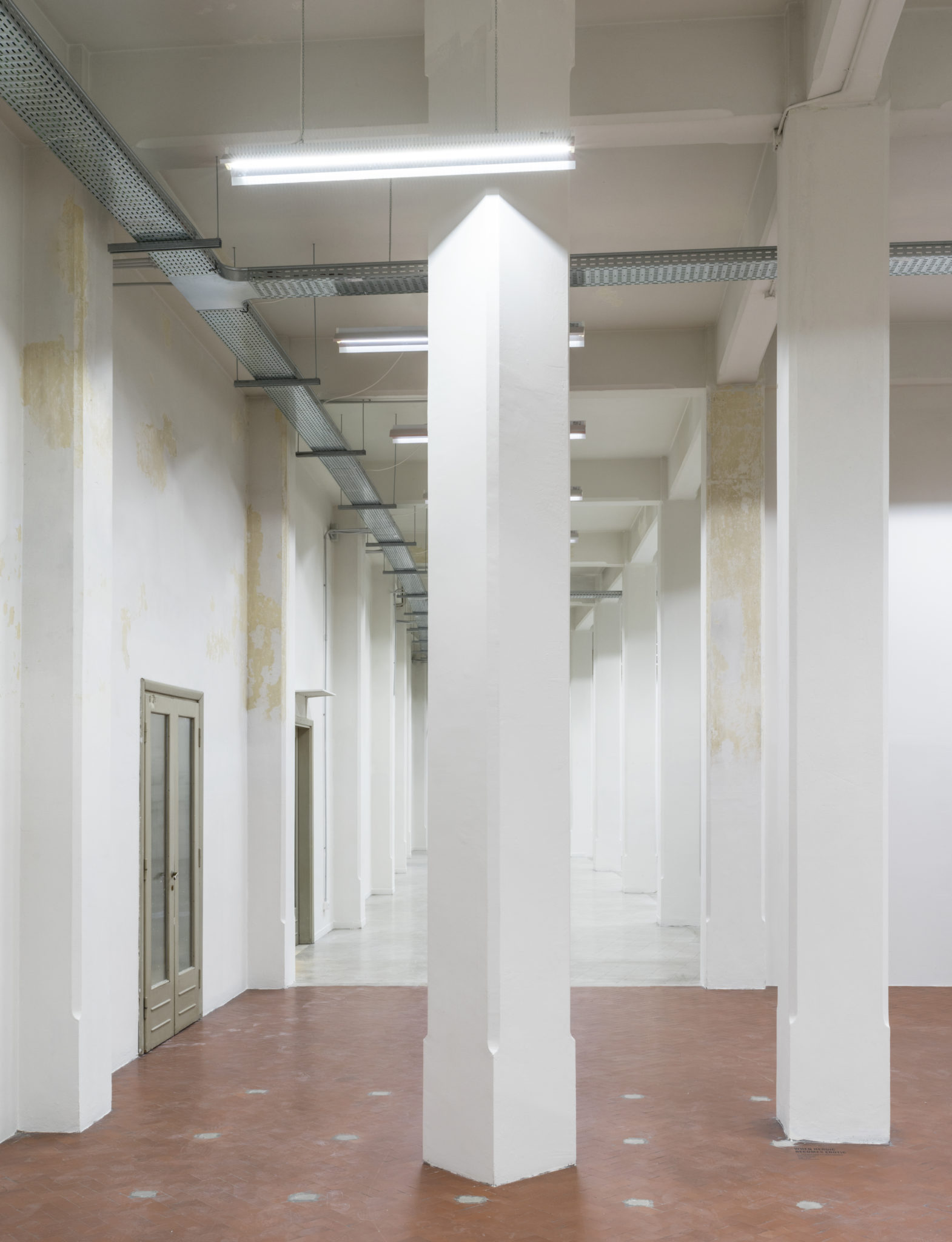Workshop with Mario Airò
The time of the sorcerers

In fact, the workshop dedicated to the young artists in residence actually took its cue from a text, with Airò proposing that they read The Time of the Sorcerers by the philosopher Wolfram Eilenberger. The book parallels the biographical events of the philosophers Ludwig Wittgenstein, Walter Benjamin, Martin Heidegger and Ernst Cassirer, during the years of the Weimar Republic. In the reflections of the four thinkers, the author highlights the creative attempt to overcome the codes of nineteenth-century academic philosophy, in order to achieve a regeneration of philosophical thought. Like “sorcerers”, such philosophers try to draw on ancestral roots, pushing themselves, in an almost thaumaturgical way, to face the unknown and to look beyond it.
Airò and the young artists spoke about these issues during their first week together.
The series of workshops for the artists in residence opened on 18th September with the arrival of Mario Airò to Manifattura Tabacchi. The artist, originally from Pavia and trained at the Academy of Brera, is tied to Florence through his membership of the collective Base/Progetti per l’arte.
His artistic research is distinguished by his ability to characterize spaces and transform them into suggestive environments, often loaded with cultural references from the history of art, mythology, philosophy, cinema and literature.
BIO




With a more theoretical than practical approach, Airò wanted to convey his vision of making art more authentic: “Every new work” he explains, “should be either in the beyond or taken from it“.
As if involved in a modern maieutic circle, the artists were therefore asked to be able to go around different places within the Manifattura and try to imagine works that could be created there in situ. Then the idea arose of creating a single totemic work. After a long exchange of ideas, the first such exchange between the artists, the project took the shape of an “abusive pillar”, placed in an “uncomfortable” and “out of tune” position in relation to the surrounding architecture, in order to break the rhythm dictated by the real, pre-existing pillars.
Multiple symbolic references converge in the piece, from the verticality of falling bodies described by the Epicurean linamen, to the most recent changes or “displacements” from the art of the 70s. In particular, there is a reference to artistic practices that proposed a direct and collective experience of the work, and which were a feature of the exhibition curated by Harald Szeemann in 1969 at the Kunsthalle in Bern. When Attitude Becomes Form is backlit on the Manifattura Tabacchi next to the pillar, which the artists decided to call When Heroic Becomes Erotic.

Mohsen Baghernejad Moghanjooghi, Matteo Coluccia, Stefano Giuri, Lori Lako, Gioele Pomante,Tatiana Stropkaiová
When Heroic Becomes Erotic
2018
Plasteredboard sheets, metal sheet profiles, water-based interior paint
The reproduced pillar, an integral part of the verticality of the space, breaks the architectural rhythm while maintaining a formal dialogue with the other pillars.Its phallic form is lessened through repetition. An open invitation, not so much to reflect, as to look.
“Herein I would fain that you should learn this too, that when first-bodies are being carried downwards straight through the void by their own weight, at times quite undetermined and at undetermined spots they push a little from their path”
De rerum natura, Lucretius